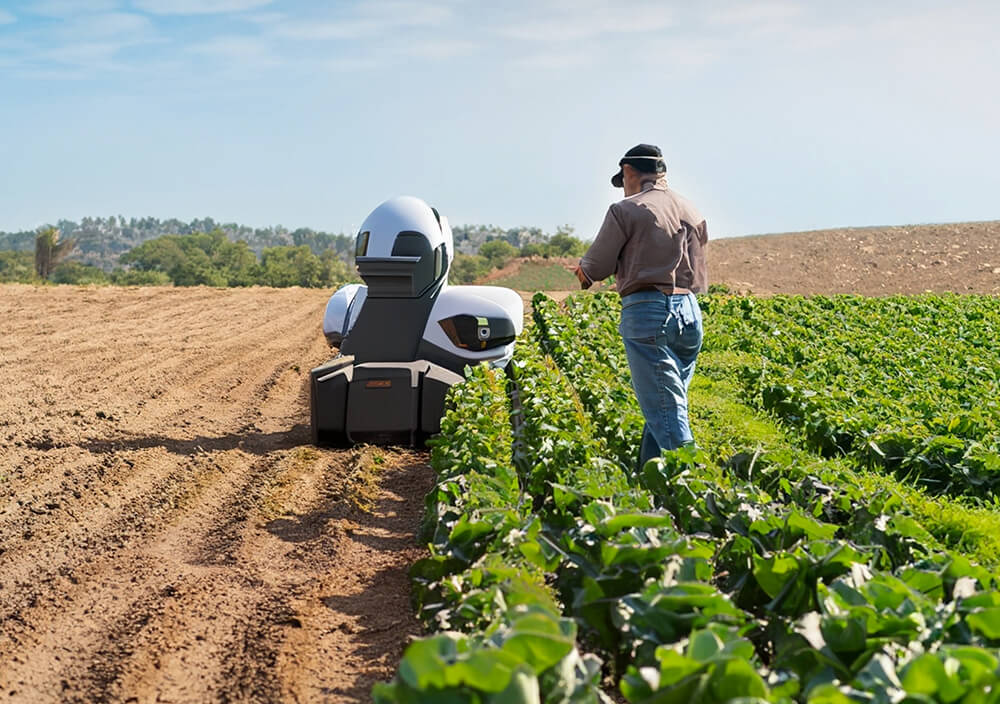In the ever-evolving landscape of agriculture, the integration of technology has become paramount to meet the growing demands for food production. Among the forefront of these innovations are Agribot – autonomous machines designed to optimize farming processes. These Agribots represent a nexus of robotics, artificial intelligence, and data analytics, promising to revolutionize traditional farming practices. In this article, we’ll delve into 10 cutting-edge Agribot technologies reshaping modern agriculture.
Agribot, Precision Planting Systems
Agribot equipped with precision planting systems utilize advanced sensors and algorithms to optimize seed placement, spacing, and depth with unparalleled accuracy. By precisely planting seeds at optimal intervals and depths, farmers can maximize crop yields while minimizing resource wastage.
Autonomous Irrigation Systems
Gone are the days of manual irrigation schedules. Autonomous Agribot irrigation systems leverage real-time data on soil moisture levels, weather forecasts, and crop water requirements to deliver precise amounts of water directly to the roots. This not only conserves water but also ensures optimal plant hydration, leading to healthier crops.
Weed Detection and Management
Agribot equipped with computer vision technology can identify and selectively target weeds amidst crops. These systems use machine learning algorithms to differentiate between crops and weeds, enabling precise herbicide application. By minimizing the use of herbicides, farmers can reduce environmental impact and preserve soil health.
Crop Monitoring and Health Assessment
Through the integration of sensors and imaging technologies, Agribot can monitor crop health parameters such as leaf color, biomass, and disease symptoms. By continuously assessing crop health in real-time, farmers can detect issues early and take proactive measures to mitigate crop losses, leading to improved yields and profitability.
Autonomous Harvesting Systems
Agribot equipped with robotic arms and computer vision capabilities can autonomously harvest crops such as fruits and vegetables. These systems can precisely identify and pick ripe produce while leaving unripe ones intact, thereby reducing labor costs and increasing harvesting efficiency.
Soil Analysis and Nutrient Management
Agribot equipped with soil sensors can perform on-the-go soil analysis, measuring key parameters such as pH, moisture content, and nutrient levels. By providing real-time soil insights, the Agribot enables farmers to optimize fertilizer application, thereby promoting healthy plant growth and reducing nutrient runoff.
Climate-Controlled Environments
Agribots are revolutionizing greenhouse farming by providing precise climate control through sensors and actuators. These systems can regulate factors such as temperature, humidity, and CO2 levels, creating optimal growing conditions for crops year-round. This level of control not only increases yield consistency but also allows for the cultivation of crops in regions with unfavorable climates.
Autonomous Pest Management
Agribot equipped with smart pest management systems can detect and respond to pest infestations in real-time. By utilizing non-invasive methods such as pheromone traps and biological controls, these Agribots can effectively manage pest populations while minimizing the use of chemical pesticides, thus promoting ecological balance in agricultural ecosystems.
Data-Driven Decision Support Systems
Agribot generates vast amounts of data regarding crop growth, environmental conditions, and farming operations. Data analytics tools and algorithms can process this information to provide farmers with actionable insights and recommendations, enabling data-driven decision-making for optimized resource allocation and crop management.
Autonomous Crop Transport
Agribot equipped with autonomous transport capabilities can efficiently transport harvested crops within the farm or to processing facilities. By automating the logistics of crop transportation, these Agribots streamline post-harvest operations, reducing reliance on manual labor and improving overall operational efficiency.
Conclusion
The advent of Agribot heralds a new era of efficiency, sustainability, and productivity in agriculture. These cutting-edge technologies empower farmers to overcome traditional limitations and unlock new opportunities for innovation and growth. By embracing Agribot, farmers can navigate the challenges of modern agriculture with confidence, paving the way for a more resilient and sustainable food system.
FAQs
Q1. Are robotic farming systems accessible for small-scale operations?
Yes, robotic farming systems come in various sizes and configurations, making them suitable for operations of all scales. Many manufacturers offer modular solutions that can be tailored to fit specific needs and budgets, ensuring accessibility for small-scale farmers.
Q2. How do automated farming technologies contribute to sustainability?
Automated farming technologies help improve sustainability by optimizing resource usage, reducing waste, and minimizing environmental impact. By precisely managing inputs such as water, fertilizers, and pesticides, these technologies promote efficient and eco-friendly farming practices.
Q3. What are the benefits of deploying robotics in agriculture?
Robotics in agriculture offer numerous benefits, including increased efficiency, higher productivity, and reduced labor costs. By automating repetitive tasks such as planting, harvesting, and weeding, robots enable farmers to focus on higher-value activities while achieving better overall results.
Q4. Can automated farming systems adapt to different crops and environments?
Yes, automated farming systems are designed to be versatile and adaptable. They can be programmed and equipped with various tools and sensors to suit different crops, growing conditions, and farming practices. This flexibility allows for seamless integration into diverse agricultural operations.
Q5. What support and resources are available for farmers transitioning to automated systems?
Many organizations and initiatives provide support and resources for farmers transitioning to automated systems. This includes training programs, technical assistance, and financial incentives aimed at helping farmers adopt and integrate robotic technologies into their operations successfully.
Also read: Embracing Sustainable Fashion: Transforming Your Wardrobe with Eco-friendly Choices





